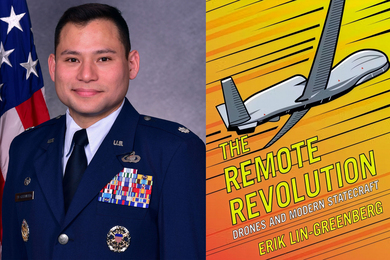The MIT Media Laboratory will receive a donation of $2.65 million in computer equipment and funds for the support of research projects from Hewlett-Packard Company.
The three-year grant continues the company's tradition, begun more than 20 years ago, of supporting education and research programs at MIT. HP provided the first workstation to the MIT Media Laboratory in 1985.
Professor Nicholas Negroponte, Media Laboratory founder and director, said the donation will be used "for a collaborative project between HP and MIT as part of HP's External Research Program."
The project aims to improve the ways in which humans interact with computers by programming the machines to be able to recognize more than text and numbers.
"The Media Lab depends on the support of corporations like HP that share our visions for the future," Professor Negroponte said. "In this case, the vision is to create smarter, more responsive computers that truly enhance our quality of living."
Joel Birnbaum, HP vice president of research and development and director of HP Laboratories, said, "The External Research Program exists to allow HP researchers to collaborate with educational researchers at the country's top universities. This partnership between HP and MIT is an excellent example of a valuable public/private relationship that will benefit not just HP and MIT, but potentially the rest of the world."
Gary B. Eichhorn, general manager of HP's Workstation Systems Group, said the specific projects being conducted are in the context of music and visual patterns.
Equipment being donated in the first year includes 11 HP Apollo 9000 Series 700 workstations as well as laboratory test and measurement instruments.
The Media Lab's Physics and Media Group, under the direction of Assistant Professor Neil A. Gershenfeld, will use the equipment to create tools to improve human/machine interaction. The MIT group will work with scientists from HP's Personal Systems Lab in Bristol, England. Professor Gershenfeld's team is exploring the fundamental physics of the materials, sensors and algorithms that lie between information processing systems and their environment. This research will be used to guide the development of new devices to enable richer interaction between user and computer-for example, computers able to provide tactile as well as auditory and visual feedback and able to remotely sense a user's activity.
Professor Gershenfeld's project is intertwined with Associate Professor Tod Machover's Hyperinstrument research. In collaboration with cellist Yo-Yo Ma, Professors Gershenfeld and Machover recently developed sensors, signal processing equipment and software to interface a cello to a real-time computing environment. The result: a musical instrument that uses technology to enhance a virtuoso's performance.
Another effort is the Texture and Pattern Modeling project led by Assistant Professor Rosalind W. Picard. Her team will collaborate with HP to pursue new ways of accessing information in multimedia databases. The results are expected to be used widely in medical and engineering applications. The project focuses on developing mathematical models that will allow computers to recognize textures and patterns in an image. Professor Picard's group is working to program computers to recognize the overall properties of images just as easily as today's computers search for and retrieve phrases or words.
A version of this article appeared in the October 6, 1993 issue of MIT Tech Talk (Volume 38, Number 9).





